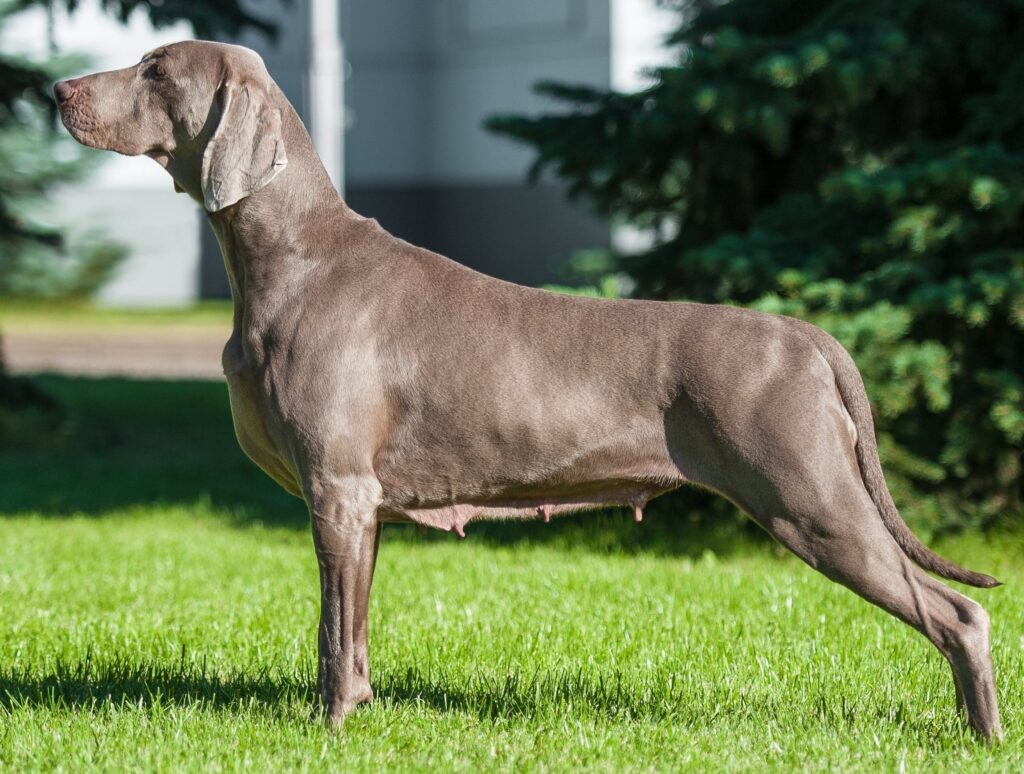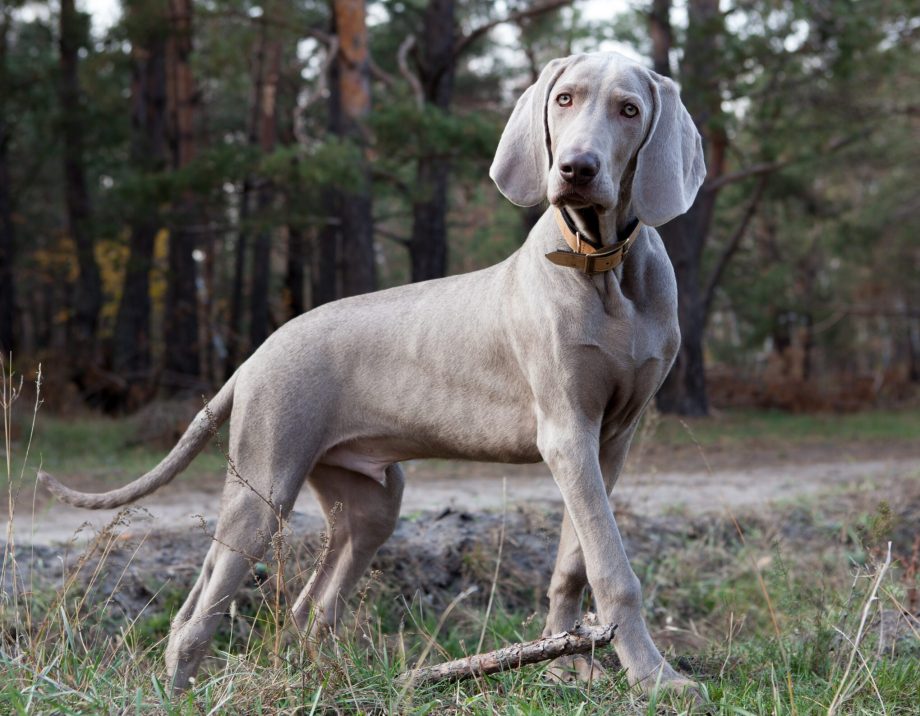The Weimaraner is a large striking gundog originally bred by German nobles to hunt large game and is sometimes referred to as the grey ghost of the dog world originating from its ghostly coat and eye colour and stealthy hunting style.
They are large athletic and muscular dogs, with a sleek silhouette, and a balanced and graceful appearance. Their coat is smooth and silver-grey and they have long velvety hound-like ears, and distinctive light amber or blue-grey eyes. Weimaraners are very people-orientated and form close bonds with their owners, and demand attention, preferring not to be left alone for too long. They are wonderfully amiable, and occasionally clownish, making them great companions for children. They also get on well with other dogs and even with cats, if raised alongside them, although care should be taken with other small household pets due to their high prey drive. Weimaraners need a minimum of two hours of exercise a day and will relish long walks, runs and endless games of fetch. With their active brains, they also respond well to obedience training. For active owners and families, that are able to spend lots of time exercising and simply being with their dog, the Weimaraner makes a devoted and loving companion. There is also a long-haired variety of this breed, which is much less numerous.

History
The Weimaraner was created in the early 19th Century, by German nobility at the German Court of Grand Duke Karl August of Weimar. It is thought that it was bred from the now extinct Chenin-gris breed and St Hubert Hound, from which Bloodhounds are also descended. It was originally developed to hunt large prey such as wolves, bears, and mountain lions, but as Europe’s number of big game decreased, the Weimaraner turned into a point and retrieve hunter of small game.





